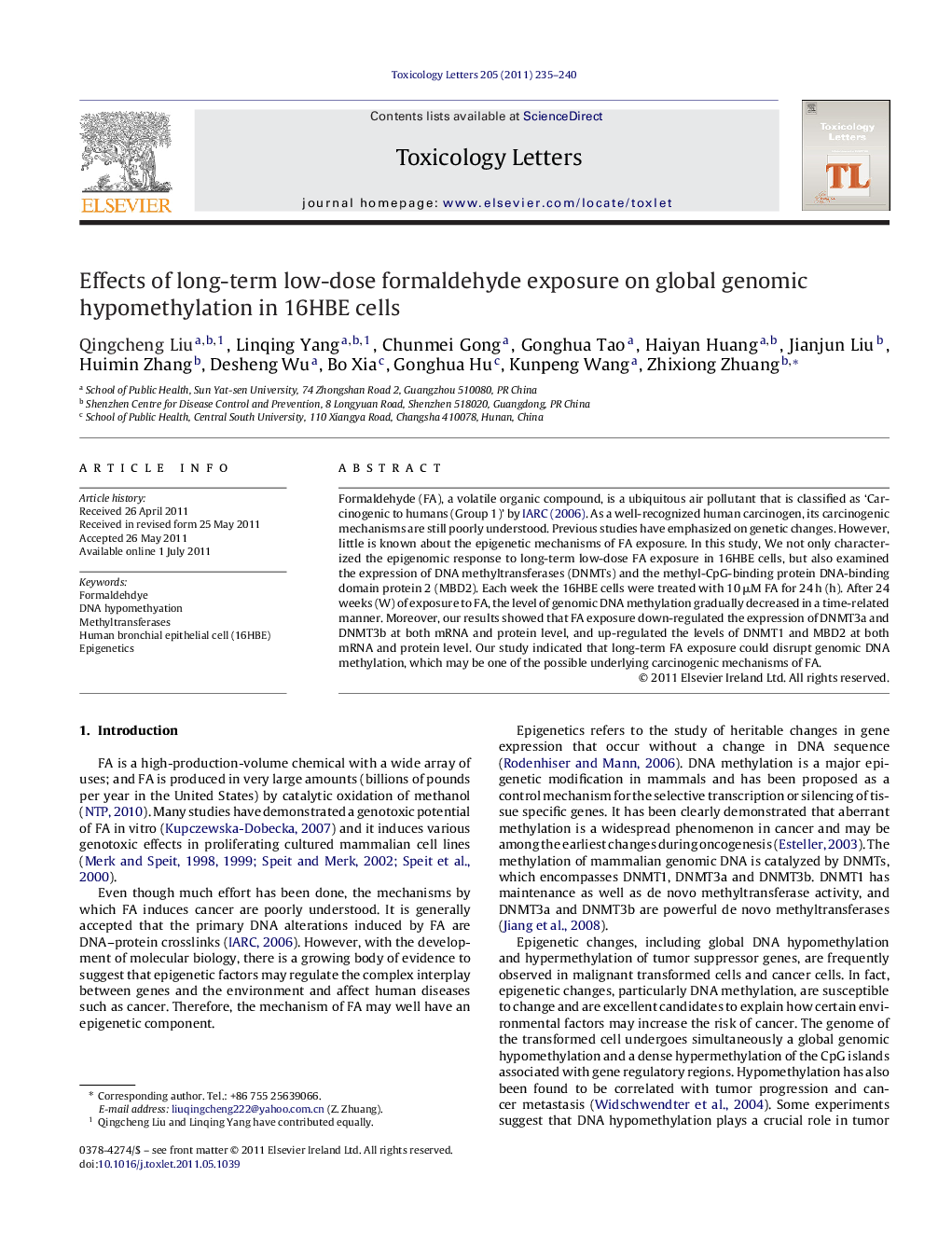| Article ID | Journal | Published Year | Pages | File Type |
|---|---|---|---|---|
| 2599864 | Toxicology Letters | 2011 | 6 Pages |
Formaldehyde (FA), a volatile organic compound, is a ubiquitous air pollutant that is classified as ‘Carcinogenic to humans (Group 1)’ by IARC (2006). As a well-recognized human carcinogen, its carcinogenic mechanisms are still poorly understood. Previous studies have emphasized on genetic changes. However, little is known about the epigenetic mechanisms of FA exposure. In this study, We not only characterized the epigenomic response to long-term low-dose FA exposure in 16HBE cells, but also examined the expression of DNA methyltransferases (DNMTs) and the methyl-CpG-binding protein DNA-binding domain protein 2 (MBD2). Each week the 16HBE cells were treated with 10 μM FA for 24 h (h). After 24 weeks (W) of exposure to FA, the level of genomic DNA methylation gradually decreased in a time-related manner. Moreover, our results showed that FA exposure down-regulated the expression of DNMT3a and DNMT3b at both mRNA and protein level, and up-regulated the levels of DNMT1 and MBD2 at both mRNA and protein level. Our study indicated that long-term FA exposure could disrupt genomic DNA methylation, which may be one of the possible underlying carcinogenic mechanisms of FA.
► We treated 16HBE cells with 10 μM formaldehyde for 24 weeks. ► The global genomic methylation profiles were compared during this process. ► We found that repeated FA treatment could significantly induce global genomic hypomethylation.
